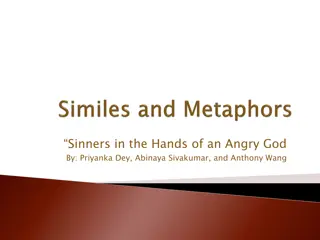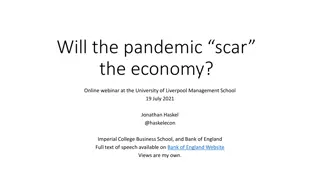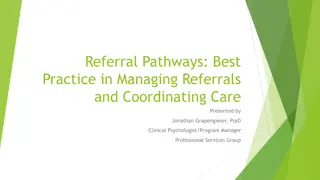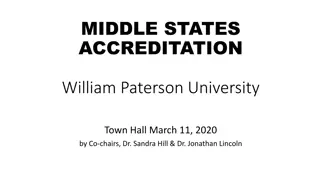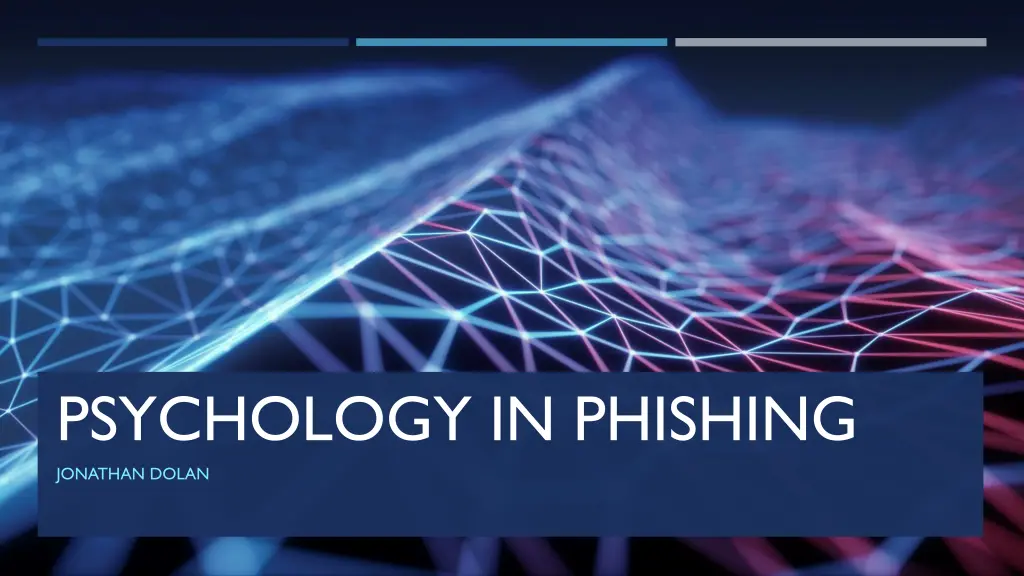
Understanding Psychology Behind Phishing Attacks
Learn about the psychology behind phishing attacks, how attackers engineer personalized attacks using fear appeals and brand familiarity to deceive individuals. Discover statistics on successful phishing attacks and tips to identify phishing emails and text messages. Explore the two critical thinking processes involved in combating phishing scams.
Download Presentation

Please find below an Image/Link to download the presentation.
The content on the website is provided AS IS for your information and personal use only. It may not be sold, licensed, or shared on other websites without obtaining consent from the author. If you encounter any issues during the download, it is possible that the publisher has removed the file from their server.
You are allowed to download the files provided on this website for personal or commercial use, subject to the condition that they are used lawfully. All files are the property of their respective owners.
The content on the website is provided AS IS for your information and personal use only. It may not be sold, licensed, or shared on other websites without obtaining consent from the author.
E N D
Presentation Transcript
PSYCHOLOGY IN PHISHING JONATHAN DOLAN
PHISHING The National Institute of Standards and Technology (NIST) : Tricking individuals into disclosing sensitive personal information through deceptive computer-based means. [1]
Vishwanath: phishers engineer attacks to take advantage of individuals high in affective commitment by personalizing [emails] and invoking brand familiarity, using fear appeals in the form of threats and warnings, appealing to individuals sense of patriotism [The] emphasis is on peripheral route persuasion where images and symbolic cues distract attention away from detailed and thoughtful cognition. [2] PHISHING
PROOFPOINT, 2020 STATE OF THE PHISH [3] More than half (55%) of respondents (of a survey of more than 600 IT professionals across seven countries) said their organization fell victim to at least one successful phishing attack in 2019 65% of U.S. organizations experienced a successful phishing attack last year, well above the 55% global average
PHISHING ATTACKS [4]
BOGUS WEBPAGE [6]
Phishing emails and text messages often tell a story to trick you into clicking on a link or opening an attachment. They may: say they ve noticed some suspicious activity or log-in attempts claim there s a problem with your account or your payment information say you must confirm some personal information FTC CONSUMER TIPS [7] include a fake invoice want you to click on a link to make a payment say you re eligible to register for a government refund offer a coupon for free stuff
PSYCHOLOGY Two processes of critical thinking: System 1 - fast, intuitive, and emotional System 2 - slow and deliberate
PSYCHOLOGY people often process email messages quickly by using mental models or heuristics and, hence, overlook cues that indicate deception [ ] [when] processing information peripherally, people do not think carefully about the content of the message; instead, they are influenced by superficial factors surrounding the communication. Phishing attempts often capitalize on peripheral routes to persuasion by incorporating cues that provoke action without careful deliberation. - Sanjay Goel [8]
PSYCHOLOGY The most crucial aspect to this is the sensitivity we have to time. In everyday work tasks, we are held and measured by the constant of time. Urgency and prioritizing of tasks becomes a common theme and normalizes the way we think. With that sensitivity to time, however, we are susceptible to making mistakes.
AWARENESS AND EDUCATION most researchers and information security specialists agree that the key countermeasure to mitigate or prevent phishing attacks is security training [9] 78% (of IT professionals in study of 600) say security awareness training reduces phishing susceptibility [3]
Gamification in Learning is an effective approach for improving intrinsic motivation, learning, coping skills, and subsequent security compliance. People are more motivated and conscientious when they have an enjoyable, immersive experience [10] AWARENESS AND EDUCATION
GAMIFICATION TEMPLATE GOAL RULES FEEDBACK PARTICIPATION IS VOLUNTARY ESTABLISHMENT [11]
RISK REDUCTION We cannot expect all users to be fully cognizant of security threats and how severe they can be to an organization, but by implementing small ways to appeal to their behaviors could give cyber security an advantage. Minimize the risk by any means necessary.
REFERENCES NIST. Computer Security Resource Center (CSRC), csrc.nist.gov. 1. Vishwanath, Arun. Habitual Facebook Use and Its Impact on Getting Deceived on Social Media. Journal of Computer-Mediated Communication, vol. 20, no. 1, 2014, pp. 83 98., doi:10.1111/jcc4.12100. 2. Proofpoint Inc., 2020 State of the Phish. Sunnyvale, CA: Proofpoint, Inc., 2020. Proofpoint, Inc. Web. 02 March 2020. 3. Crane, Casey. The Dirty Dozen: The 12 Most Costly Phishing Attack Examples. Hashed Out by The SSL Store attack-examples/. , 28 June 2019, www.thesslstore.com/blog/the-dirty-dozen-the-12-most-costly-phishing- 4. E-Tech. 6 Sophisticated Phishing Email Examples and Why They ll Trick You. E-Tech Computing, 11 Sept. 2019, www.etechcomputing.com/6-sophisticated-phishing-email-examples-and-why-theyll-trick- you/. 5. Gudkova, Darya, and Nadezhda Demidova. Spam and Phishing in Q2 2014. Securelist English, 12 Aug. 2014, securelist.com/spam-and-phishing-in-q2-2014/65755/. 6. How to Recognize and Avoid Phishing Scams. Consumer Information, 20 Feb. 2020, www.consumer.ftc.gov/articles/how-recognize-and-avoid-phishing-scams. 7. Goel, Sanjay, et al. Got Phished? Internet Security and Human Vulnerability. Journal of the Association for Information Systems, vol. 18, no. 1, 2017, pp. 22 44., doi:10.17705/1jais.00447. 8. Jansson, K., and R. von Solms. Phishing for Phishing Awareness. Behaviour & Information Technology, vol. 32, no. 6, June 2013, pp. 584 593. EBSCOhost, doi:10.1080/0144929X.2011.632650. 9. Silic, Mario, and Paul Benjamin Lowry. Using Design-Science Based Gamification to Improve Organizational Security Training and Compliance. Journal of Management Information Systems, vol. 37, no. 1, 2020, pp. 129 161., doi:10.1080/07421222.2019.1705512. 10. Winkler, Ira, and Samantha Manke. How to Create Security Awareness with Incentives. CSO Online, CSO, 2 Dec. 2013, www.csoonline.com/article/2134189/how-to-create-security-awareness-with- incentives.html. 11.
THANK YOU Jonathan Dolan jdolan6@mercy.edu






